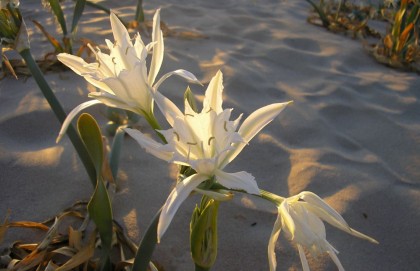
December 2014
 | December 2014 |
Conserving wild plants and habitats for people across the Mediterranean | |
|---|---|
 The IUCN Centre for Mediterranean Cooperation and Plantlife International are beginning a new project to further the conservation of wild plants and their habitats in the southern and eastern parts of the Mediterranean. The project ‘Conserving wild plants and habitats for people in the South and East Mediterranean (IPA-Med)' was launched at the kick-off workshop held in Montenegro in October. This project represents an ambitious initiative to save wild plants in the southern and eastern Mediterranean region by pooling the experience and expertise of Plantlife International, IUCN and partner organizations in 11 Mediterranean countries. Experts will document the conservation status and distribution of selected rare and threatened plant species and habitats in Important Plant Areas (IPAs), especially in those countries where information is insufficient, out of date or absent. The results will be used to target conservation actions and secure the future of these invaluable places for wild plants. Last October conservation organizations from the Balkans and Turkey started work in Ulcinj, Montenegro, in the Long Beach and Ada Bojana IPA, the most extensive natural sand dune system on the east coast of the Adriatic. Important threatened species such as Calystegia soldanella and Pancratium maritimum are found there. This IPA is threatened by the development of a massive hotel complex, which, if allowed to go ahead, will threaten the area's unique vegetation. During this three-year project partners will undertake plant conservation activities in 20 IPAs in six countries (Algeria, Lebanon, the former Yugoslav Republic of Macedonia, Montenegro, Morocco and Turkey), involving a range of stakeholders including civil society, research institutions and public administrations. Development, land abandonment, overgrazing and over-exploitation, the major region-wide threats to wild plants and habitats, will be addressed through these management actions to secure livelihoods and safeguard critically threatened plants for the future. A network of conservationists across the region will work together to raise the profile of IPAs throughout the Mediterranean basin. ‘At the end of the project we believe all these sites will be better protected from damaging influences, their resources will be safeguarded and their status as Important Plant Areas will be secured for the long term,' says Bertrand de Montmollin, Chair of the Mediterranean Plants Specialist Group of IUCN SSC. The Mediterranean basin is one of the world's major plant diversity hotspots, with 10 per cent of all higher plants. The flora consists of around 25,000 species with exceptionally high endemicity: approximately 13,000 species are found only within the Mediterranean region. Since many of the Important Plant Areas in the Mediterranean region contain plants that support livelihoods, it is critical that these plant resources are managed properly to secure these livelihoods for the long term, while also safeguarding biodiversity. This project will be funded by the MAVA Foundation with components supported by EuropeAid and the Ernest Kleinwort Foundation.
Photo: Pancratium maritimum, an important plant for Long Beach, Ulcinj (Montenegro) | |